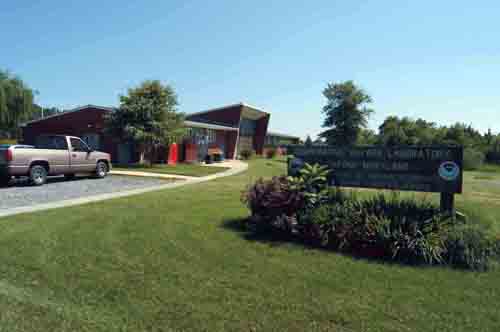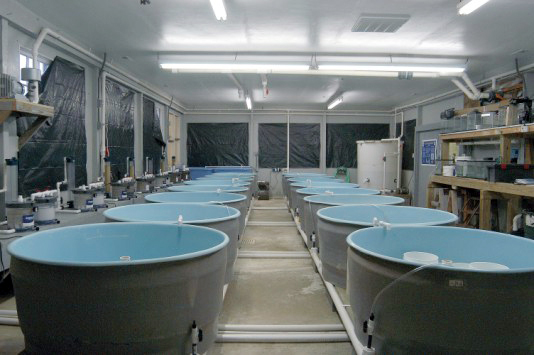 904 South Morris Street
904 South Morris Street
Oxford, Maryland 21654
Phone: 410-226-5193
Fax: 410-226-5925/410-226-0120
Office Hours: Monday - Friday 8am-4:30pm
The laboratory is located on the Tred Avon River, a tributary of Chesapeake Bay, which is the largest estuary in the United States. The site is on 11.5 acres in the Town of Oxford on the Eastern Shore of Maryland and includes beachfront, tidal and non-tidal wetlands, pine forest, and an oyster sanctuary.
Directions: Annapolis to Oxford
- Take U.S. Rt. 50 east towards Easton
- Turn right on MD Rt. 322 (Easton Bypass)
- Turn right on MD Rt. 333 to Oxford
- When entering the town of Oxford - slow down to 25 mph
- Turn left at the water's edge and the flag pole onto South Morris Street
- Follow the street to the end
The Cooperative Oxford Laboratory has 17,000 square feet of laboratory and office space, including wet labs with flowing estuarine water, and quarantine lab facilities.
 Full histology capabilities are available for invertebrate and vertebrate tissues, including paraffin, plastic, and frozen processing. Routine hematoxylin and eosin, special tinctorial stains, and immunostains are supported. Two ASCP certified (1 HTL, 1 HT) biologists are on Department of Natural Resources staff.
Full histology capabilities are available for invertebrate and vertebrate tissues, including paraffin, plastic, and frozen processing. Routine hematoxylin and eosin, special tinctorial stains, and immunostains are supported. Two ASCP certified (1 HTL, 1 HT) biologists are on Department of Natural Resources staff.
Wet laboratory facilities use flow through water from the adjacent Tred Avon River. There is also a small quarantine laboratory for holding exotic species under study.
The library is part of the National Ocean Service's Center for Coastal Environmental Health and Biomolecular Health Research Laboratory. It is a highly specialized library established to help laboratory biologists in their research on diseases of shellfish and fish. Click to learn more about
the Cooperative Oxford Laboratory Library.
The Fish and Wildlife Health Program Necropsy Laboratory is equipped for anatomical, pathological and forensic investigations of fish, marine mammals, sea turtles, and other wildlife. A wide variety of samples (e.g. histology, microbiology, genetics, parasites) can be collected, preserved, and stored.
 The Oxford Laboratory has several wet lab facilities on site allowing scientists to work with fresh water, estuarine, or marine organisms under controlled conditions.
The Oxford Laboratory has several wet lab facilities on site allowing scientists to work with fresh water, estuarine, or marine organisms under controlled conditions.